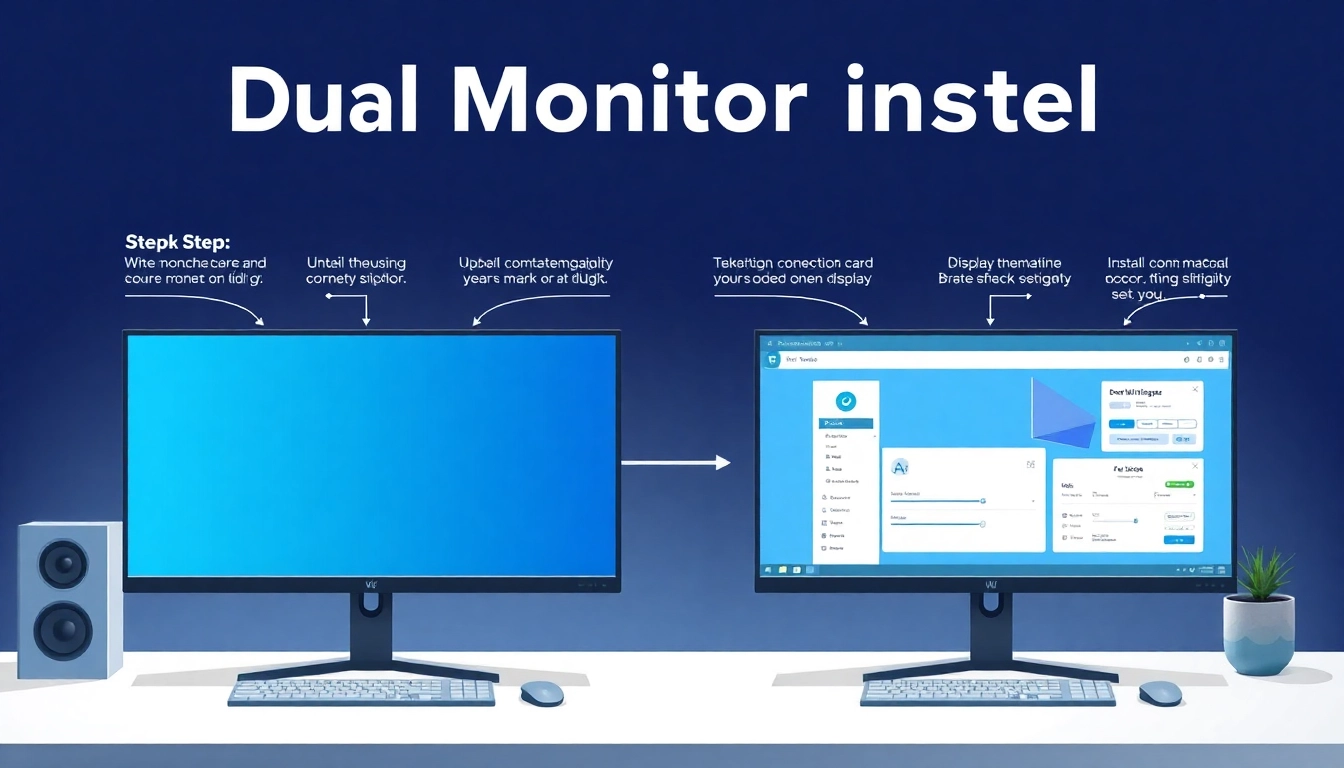Understanding Web Development
Definition of Web Development
Web development encompasses the processes involved in building and maintaining websites. It goes beyond mere design to include aspects of technology, coding, and content deployment. On a basic level, web development can be divided into three main categories: front-end development, which focuses on the visual aspects of a website; back-end development, which deals with the server and database interactions; and full-stack development, which combines both front-end and back-end elements. Whether creating a simple informational site or a complex web application, the principles of web development remain integral to the process.
Importance in Today’s Digital Landscape
In today’s digital environment, having a robust online presence is crucial for businesses and individuals alike. The importance of web development cannot be overstated; it serves as the backbone of every website and web application, directly affecting user experience, functionality, and credibility. An effectively developed website can drive sales, improve user engagement, and enhance brand recognition. As such, understanding web development is vital not just for developers but also for business owners who wish to leverage the internet for growth and outreach.
Types of Web Development
Web development can generally be classified into three primary types:
- Front-End Development: This involves the parts of a website that users see and interact with. Front-end developers work with languages like HTML, CSS, and JavaScript to create the visual layout and interactivity.
- Back-End Development: Back-end development focuses on the server, application, and database that work behind the scenes to manage data exchange. Technologies and frameworks like Node.js, Ruby on Rails, and Python’s Django are commonly used in this area.
- Full-Stack Development: Full-stack developers possess a comprehensive understanding of both front-end and back-end technologies, making them adaptable in various project requirements. Their expertise enables them to manage all aspects of web development.
Core Technologies in Web Development
HTML: The Foundation of Web Pages
HTML, or HyperText Markup Language, serves as the foundation of web pages. It structures content on the web, allowing browsers to render text, images, and other media correctly. HTML uses a system of elements represented by tags, which can create headers, paragraphs, links, lists, and embed images and videos. As the structure of a site is built upon HTML, learning this language is an essential first step for any aspiring web developer.
CSS: Designing for Engagement
Cascading Style Sheets, or CSS, is pivotal in controlling the presentation of web pages. While HTML provides structure, CSS manages layout, colors, fonts, and overall aesthetics. This separation of content and design allows for more flexible and maintainable code, enabling developers to create visually attractive interfaces that enhance user engagement. Mastery of CSS also includes understanding concepts such as responsive design, which ensures that websites look good on all devices and screen sizes.
JavaScript: Interactivity and Functionality
JavaScript is a powerful scripting language that adds interactivity and dynamic features to websites. It’s widely used for creating interactive forms, animations, and real-time updates on web applications. Libraries like jQuery and frameworks such as Angular, React, and Vue.js have revolutionized how developers build web applications, promoting a more efficient code structure and improved user experience. Proficiency in JavaScript is essential for front-end developers, as it allows them to create websites that are not only functional but also engaging.
The Web Development Process
Planning and Strategy Development
The initial phase of web development involves planning and strategizing the project’s scope and objectives. This stage typically includes defining the target audience, understanding user requirements, and setting clear goals for the website. Such thorough research helps developers to create a solid foundation that aligns with user needs, ensuring a more successful final product.
Design and Prototyping
Once the planning stage is completed, the next step involves designing the layout and user interface of the website. This phase often includes creating wireframes and prototypes to visualize how the final product will look and function. Tools such as Adobe XD and Figma are invaluable in this process, allowing designers and developers to collaborate effectively and iterate on their ideas quickly.
Implementation and Testing
The implementation phase is where the actual coding begins. Developers write the necessary HTML, CSS, and JavaScript to bring the designs to life. After coding, thorough testing is essential to ensure that the website functions correctly across various browsers and devices. This testing may involve checking for bugs, performance optimization, and usability assessments. Continuous integration and deployment practices, including automated testing, can significantly improve efficiency in this stage.
Tools and Resources for Aspiring Developers
Integrated Development Environments (IDEs)
An Integrated Development Environment (IDE) is a crucial tool for developers, providing a comprehensive workspace that combines code editing, debugging, and compilation features. Popular IDEs like Visual Studio Code, Sublime Text, and Atom facilitate a smoother coding experience with features like syntax highlighting, autocomplete suggestions, and integrated terminal support. Learning to utilize an IDE effectively can greatly enhance a developer’s productivity.
Version Control Systems
Version control systems (VCS) are vital for managing changes to code over time. Git, in particular, is the most widely used system, allowing developers to collaborate effectively by tracking changes, reverting to previous versions, and branching off new features without affecting the primary codebase. Understanding the fundamentals of Git and platforms like GitHub or GitLab is essential for developers looking to work in a collaborative environment.
Online Learning Platforms and Communities
With the fast-paced nature of technology, online learning platforms can provide developers with the latest skills and knowledge. Websites such as Codecademy, freeCodeCamp, and Udacity offer a myriad of courses that cater to both beginners and advanced developers. Engaging with online communities, such as those on Reddit or Stack Overflow, can also be beneficial for seeking advice, sharing projects, and staying updated on industry trends.
Future Trends in Web Development
The Rise of Progressive Web Apps
Progressive Web Apps (PWAs) are an emerging trend in web development that combines the best of web and mobile apps. They offer a user experience similar to native applications, providing offline access and faster load times. PWAs are scalable and require less storage space compared to traditional apps, making them an appealing solution for businesses looking to engage users effectively across devices.
Embracing AI and Automation
The integration of Artificial Intelligence (AI) into web development is gaining traction, enabling smarter user experiences and more efficient processes. AI algorithms can help in analyzing user behavior, personalizing content, and even automating certain aspects of web design and development. Developers should stay informed about these advancements to leverage AI effectively in their projects.
Enhancing User Experience through Accessibility
As the web continues to evolve, the importance of accessibility has become paramount. Developers are now more focused on creating inclusive websites that accommodate users with disabilities. Familiarizing oneself with accessibility standards, such as the Web Content Accessibility Guidelines (WCAG), can enhance a website’s usability and appeal to a broader audience. This growth reflects an ongoing commitment to ensuring that everyone can access and enjoy online content, driving continued innovation in web development.



